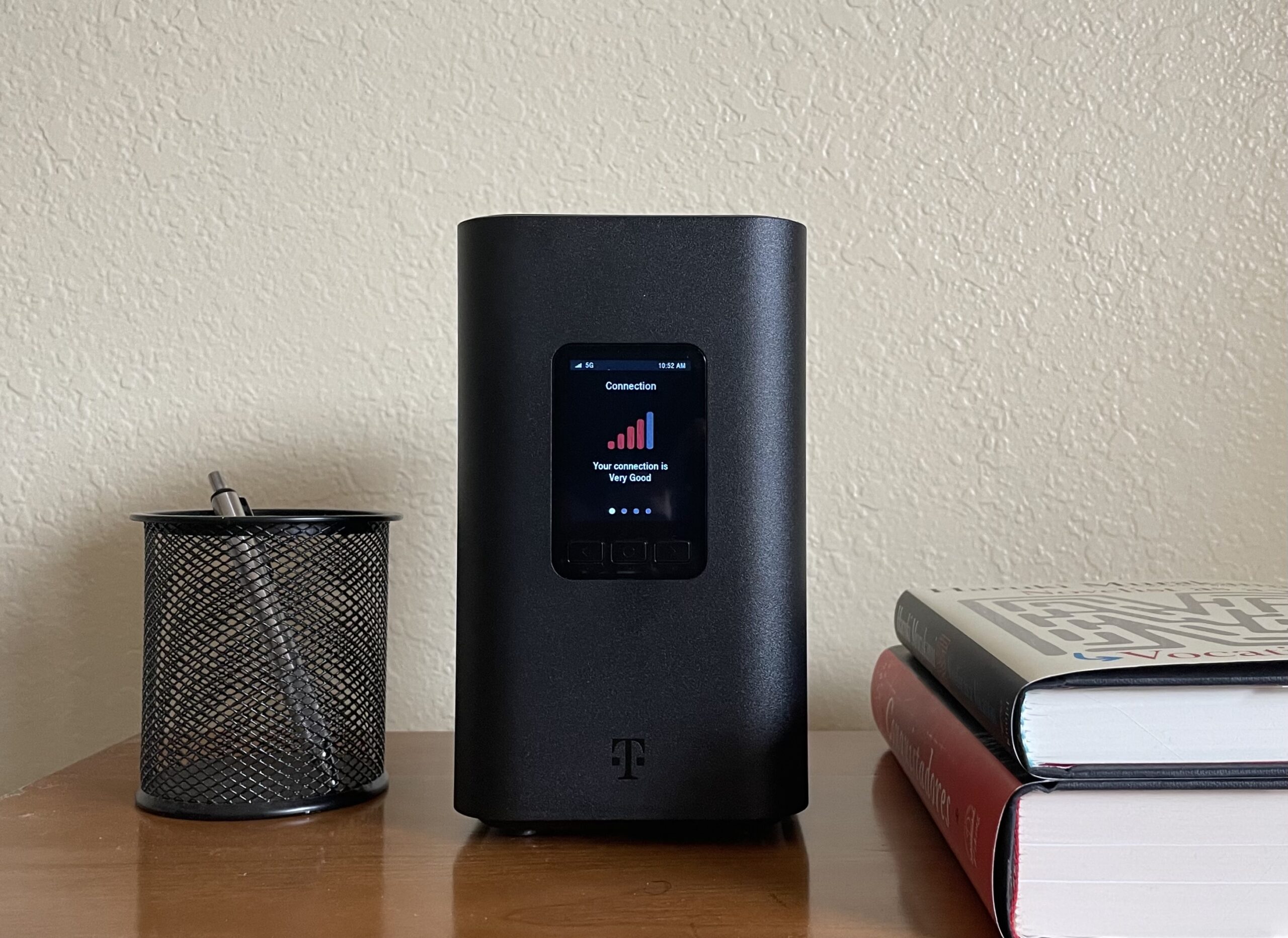FCC Restores Net Neutrality Protections
Vote reinstates national standards for broadband reliability, security, and consumer protection
Apr 25, 2024 | Share
News, Technology
The FCC voted 3–2 today to reinstate net neutrality protections which had been removed in 2017. This will allow greater freedom and a more consistent and reliable online experience for internet users. It will also promote competition among internet providers and weaken the power of tech monopolies.
This vote comes after three years of trying to overcome bureaucratic hurdles and political deadlock in the FCC. Although its effects might not be as visible as large infrastructure projects or assistance programs like the ACP, net neutrality is something that impacts everyone that uses the internet.
What is net neutrality?
Net neutrality is the idea that all information moving across the internet, regardless of what it is, should be treated equally. This means that the companies that operate the networks that make up the internet should not block, slow, or otherwise penalize users based on the content, source, or destination of their data. For example, net neutrality protections would prevent your internet service provider (ISP) from slowing down data coming from Netflix because it had made a deal with Disney+.
Sign up for our newsletter. Get more from your internet.
Have a better, faster, more secure experience with your internet.
By signing up, you agree to our Privacy Policy & Terms and Conditions.
The battle over net neutrality
The FCC first introduced strong net neutrality protections in 2010. These rules were challenged in court by Verizon and overturned in 2014, though new rules were later introduced in 2015. Two years later, the FCC had a new chairman, Ajit Pai, and repealed the net neutrality rules. This set off another wave of legal challenges by supporters of net neutrality and some rather unpopular moves by many ISPs.
Although Pai resigned from the FCC in January of 2021 and the new pro-net neutrality chairwoman, Jessica Rosenworcel, was confirmed that year, nothing happened with the net neutrality issue due to the vacant seat on the commission. This seat was left vacant by the U.S. Senate for three years, leaving the FCC in a 2-2 deadlock over net neutrality.
In September 2023, the FCC finally confirmed the fifth member of the commission, breaking the deadlock and getting things moving once again.
Broadband internet as a common carrier
One of the significant legal aspects of the net neutrality debate is the way internet service is classified. Under the Communications Act of 1934, telecommunications like the telephone system are treated more or less as a public utility like your power or water company. Because they’re essential, the government has a lot of oversight to ensure that customers aren’t being overcharged or otherwise exploited.
These types of services are also called “common carriers,” because anyone can use them, in contrast to radio or television stations where you can’t just roll up to the front door and ask how much it costs to make a broadcast.
The initial legal challenges to net neutrality rules revolved around how internet service was classified. These questions were resolved when the FCC classified it as telecommunications under Title II of the act. Under Pai, the FCC reclassified it as an “information service” under Title I, which limited the ability of the FCC to regulate internet providers. Information services are defined as services that can create or send data, like an electronic publisher, but don’t control or manage the systems they use to send and receive data.
The absurdity of the 2017 change that reclassified the internet as an information service simply because it connects people to information was noted in today’s meeting by Commissioner Geoffrey Starks:
This utterly capacious interpretation would read telecommunications right out of the definition of an information service, taken to its logical conclusion it would lead to the deregulation of basically every communication service, including traditional voice telephony, and undoing Congress’ will.
He also noted that the Supreme Court has cautioned federal agencies against adopting expansive, unbounded definitions and that while the boundaries of the term “telecommunications” might not be
This new ruling once again classifies internet service as telecommunications under Title II of the act, which not only reflects the way the internet is actually used, but allows the FCC to ensure that people are getting fair and open access.
What do the new net neutrality rules mean?
Today’s vote will reestablish the Commission’s authority to protect consumers and cultivate a fair and open Internet. This includes restoring net neutrality protections, providing oversight for outages, boosting network security, increasing consumer protections, and restoring a standard for internet service on a national level.
Net neutrality protections
The most important thing the new ruling does is reinstate the FCC’s net neutrality rules. This prohibits ISPs from blocking and throttling specific content, as well as stopping them from engaging in paid or affiliated prioritization arrangements—conspiring with one company to throttle its competitors. The new ruling also increases transparency requirements about how providers manage traffic on their networks, which is in line with the FCC’s new requirements for consumer broadband labels.
Oversight for outages
The reclassification of internet service under Title II will also provide the FCC with additional authority to improve the resiliency and reliability of the internet infrastructure. The primary example mentioned in the ruling is that they could now require providers to report network outages to the FCC.
Having transparency for internet outages rather than simply relying on individual ISPs to deal with the problem themselves could make a huge difference, especially in rural areas. As many providers transition their networks from DSL to fiber, there’s not much incentive to improve or maintain the copper connections that rural communities rely on. More oversight could protect people in these areas from being charged high prices for low-quality service.
Boost network security
Along with improving the reliability of the nation’s networks, the reclassification will also allow the FCC to improve network security. Specifically, the Commission is looking at consumers’ privacy and data security. As a telecommunications service, internet providers are more restricted in the use and disclosure of their customers’ personal information than they were under the previous classification.
There were also concerns that when the FCC under Pai reclassified internet service under Title I that it limited the Commission’s ability to address network vulnerabilities that posed a risk to national security. Much of the country’s critical infrastructure beyond the internet itself requires the internet to function properly and could be disrupted by cyberattacks and ransomware. The FCC cited threat assessments from the US Intelligence community that claimed US telecommunications firms had already been compromised by foreign espionage operations.
The ruling also expressed a great deal of concern over the potential of adversarial foreign organizations (primarily the Chinese government) owning or operating any part of the US internet infrastructure over which government communications might travel. This includes companies offering services such as business internet access, IP transit, and data center services.
The reclassification of the internet as telecommunications allows gives the FCC a lot more oversight over ISPs to make sure that they’re keeping their networks and their customers’ data secure. Although many telecom companies argued that they were doing just fine managing security on their own, the FCC was not convinced by their arguments.
Consumer protections
The order restores the FCC’s ability to protect consumers and promote competition among telecom companies. This includes ending many unfair, unreasonable, and anticompetitive practices, such as colluding with other tech companies to block or throttle their competition, forcing exclusivity contracts on people living in apartment buildings, and other forms of discrimination.
Some smaller ISPs objected to these consumer protections and argued that they shouldn’t apply to small ISPs. The FCC, however, wanted to prevent any potential loopholes in the law and considered any hypothetical burden this might place on small ISPs to be greatly outweighed by the public interest of ensuring that all internet users are afforded the same consumer protections, regardless of where they live.
National standard
Finally, the new ruling establishes a national standard for how the internet is regulated. Following the repeal of net neutrality, multiple states stepped in to institute their own net neutrality laws. This protected internet users in some areas, while allowing them to be exploited by telecom companies in others. This also got pretty complicated, since the average internet user connects to servers all across the country on a regular basis.
Chairwoman Jessica Rosenworcel noted during the meeting that despite the FCC abdicating authority over the issue, nationwide providers are abiding by net neutrality policies. It’s just that these policies are coming from Sacramento and other state capitals, rather than from the federal government.
These new regulations make net neutrality the law everywhere. As the ruling notes, “a safe, secure, and open Internet is vital for consumers and the modern economy and merits a consistent federal standard.”
Final thoughts
Despite being a contentious political topic for a decade, this regulation really should have been a no-brainer. Besides the commonsense reclassification of the internet as what it actually is, it also protects consumers from some egregious abuses by telecom companies and prevents them from engaging in anticompetitive practices. It’s an important piece of regulation, but it’s also a pretty low bar.
Have we seen the last of the net neutrality debate? Maybe not. It’s entirely possible that the next chair of the FCC will reclassify the internet as a potato and we’ll have to go through this whole rigmarole all over again. But even if that happens, I’m confident that we can make it back.
Net neutrality also isn’t a cure-all for all the problems with the internet. As Commissioner Brendan Carr, who voted against the order, pointed out after the meeting, reclassifying internet providers under Title II does nothing to control the vast majority of tech companies who have outsized influence over what we can and cannot do on the internet. We need ways to oversee these organizations, as well.
A free and open internet is important to free expression, competition and innovation, public safety, and national security. And that’s worth fighting for. As frustrating as the last few years have been, it’s encouraging to see that people never stopped fighting.
Author - Peter Christiansen
Peter Christiansen writes about telecom policy, communications infrastructure, satellite internet, and rural connectivity for HighSpeedInternet.com. Peter holds a PhD in communication from the University of Utah and has been working in tech for over 15 years as a computer programmer, game developer, filmmaker, and writer. His writing has been praised by outlets like Wired, Digital Humanities Now, and the New Statesman.




